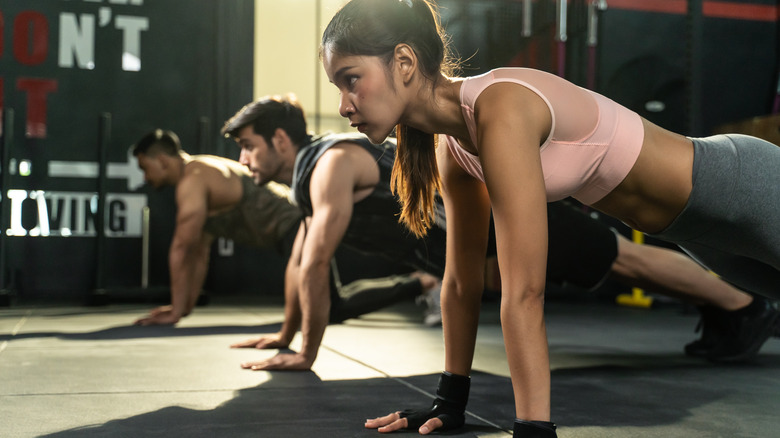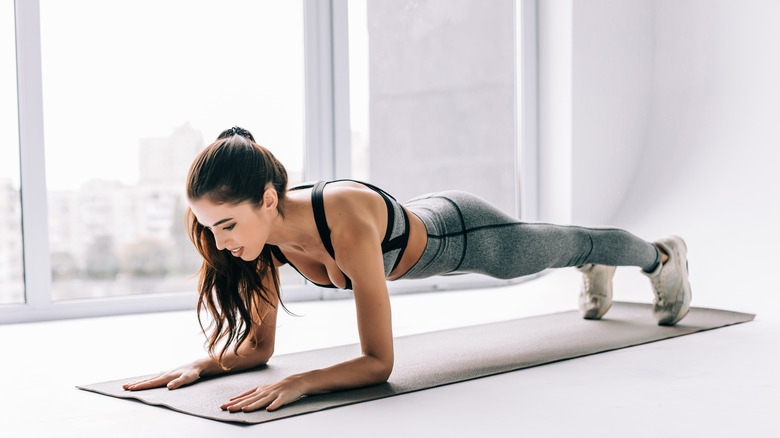This Planking Mistake Could Do More Damage Than You Thought
Whether you practice yoga regularly, or you're a gym rat working hard for gains, there's a good chance that doing plank pose is a part of your fitness routine. And it should be! According to Harvard Health Publishing, adding a set of planks to your daily workout is a safe and effective way to maintain core strength. And you should know, a strong core is key to physical fitness. When your core muscles are weak, your posture suffers, and with that comes risk of injury — from your neck and lower back down to your knees.
The plank pose involves holding a push-up position either with your hands flat on the ground and keeping your arms straight or while resting on your forearms. Experts recommend holding the position from 10 to 30 seconds. "Two minutes is often considered the maximum, and you don't get much more benefit after that," Eric L'Italien, a physical therapist with Harvard-affiliated Spaulding Rehabilitation Center, told Harvard Health Publishing. The benefits come only if you are doing your planks correctly. If you don't have proper form when planking, you could be doing more harm than good.
What happens when you curve your back while planking
You're planking! Your core is engaged! You feel great! You start getting those familiar trembles in your muscles... At that point, you may be tempted to hike your hips up toward the ceiling or let them sag to the floor, but don't! While these adjustments might offer some temporary relief, you could be doing pretty serious damage to your spine. When your spine is straight, not only are you working all the right core muscles, but your spine is safe from injury. When you let your hips drop, curving your back, you're putting unnecessary stress on your lumbar spine (per The Fit Stop.) This puts you at risk for injury like a sore lower back, or worse, a herniated disc.
While pushing your hips up toward the sky mid-plank is less risky, it isn't the best planking practice. Certified strength and conditioning specialist April Whitney told Livestrong, "Hiking the hips up to the ceiling is going to take the emphasis off your core and load it more onto your shoulders, making it a different exercise. To get the most out of a plank for your core, you'll want to keep your hips in a straight line with your body, with the pelvis tucked under."
How to do a proper plank
Okay, so with your exercise mat rolled out on the floor for extra padding, here's how to get ready to go. Face the floor, with only your forearms and toes touching your mat. Your palms should be flat on the floor, your elbows should be positioned right under your shoulders, your forearms should be stretched out straight, and your neck should be relaxed so you're looking straight down at the floor. Engage your core by pulling your belly button up towards your spine, and most importantly, keep your spine rigid so your body looks like a straight line from your neck to your toes (per Livestrong).
Pay attention to your body throughout your plank, correcting your shoulders if they begin to creep up towards your ears, and adjusting sagging hips if they start to stray from the straight line. Hold the pose, gently lower your body for a rest, and repeat.



